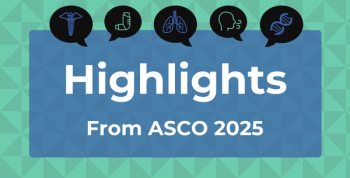
BRVO, CRVO Need More Effective Long-term Therapies
While the current therapies are effective for treating branch retinal vein occlusion (BRVO) and central retinal vein occlusion (CRVO), they are inadequate for long-term treatment in clinical practice, according to an analysis of real-world data.
While treatment of
He presented a real-world analysis of the Vestrum Health database at the
“With respect to the long-term results of anti-VEGF therapy for both branch retinal vein occlusion [BRVO] and central [retinal] vein occlusion [CRVO], much of what we know about this is from the extension phases of the original registration clinical trials for these conditions,” Ip said. “The problem is a lot of those data are hampered by either shorter term follow-up or low numbers of patients many years following the initial randomization.”
During the Q&A portion of his presentation, Ip noted that when trials were being designed for RVO approximately 15 to 20 years ago, the thought was that the RVO was a short-term condition and patients can be fixed in 6 months. As a result, the FDA only asked for short-term follow-up data. However, Ip said, this analysis and others are highlighting that it is a long-term condition.
The retrospective observation study included eyes with macular edema secondary to RVO. The eyes included in the study were identified between 2014 and 2021 in the database and had received at least 1 intravitreal anti-VEGF injection on or after diagnosis. The follow-up was 60 months after the index period (the first anti-VEGF injection).
There were 22,635 BRVO eyes and 18,064 CRVO eyes included. At baseline, the patient demographic and clinical characteristics were similar with 2 main exceptions, Ip noted. First was that patients with BRVO had a longer time from index diagnosis to index treatment. The second was that visual acuity was higher for the BRVO group vs the CRVO group.
At 60 months, there were more than 2100 eyes in the BRVO group and more than 1700 eyes in the CRVO group.
In the first year of treatment, grid laser photocoagulation and individual steroid treatment were uncommon, but they became more common as time went on, Ip said. By year 5, almost a quarter of patients with BRVO had received grid laser photocoagulation. In contract, grid laser photocoagulation was uncommon in CRVO eyes. For both BRVO and CRVO, intravitreal steroid treatment was uncommon (≤ 5%).
“In contrast, the mean number of anti-VEGF injections decreased over time,” Ip explained. In the first year, the mean number of injections for BRVO and CRVO was approximately 7 injections, but that declined to approximately 4 injections per year after.
By the fifth year, a little over one-third of eyes in both groups were still receiving anti-VEGF injections
“This really underscores the chronic nature of these 2 conditions,” Ip added.
Changes in visual acuity mirrored the changes in anti-VEGF injections. In the first year, the mean change in visual acuity from baseline peaked during the first year at around 11 letters for both groups by month 3. However, by month 60, the mean visual acuity change from baseline was 8.2 letters for BRVO and 5.3 letters for CRVO.
Over time, the proportion of patients losing 15 letters or more increased from 3.0% at month 3 to 10.9% at month 60 for the BRVO group and from 7.5% at month 3 to 18.2% at month 60 for the CRVO group.
“Those with the lowest injection numbers over 60 months tended to have worse visual acuity compared with the eyes that had higher injection numbers,” Ip pointed out.
He concluded that the findings of this real-world analysis really highlighted the chronic, long-lasting nature of BRVO and CRVO. “Many patients require long-term treatment or monitoring out for many years,” he said.
Overall, the visual acuity gains in clinical practice were lower than what was reported in the clinical trials. Ip surmised this was a result of under treatment.
“All of these data suggest that these current therapies really are effective, but they may be inadequate with respect to long-term outcomes and durability in a real-world environment,” Ip concluded.
Newsletter
Stay ahead of policy, cost, and value—subscribe to AJMC for expert insights at the intersection of clinical care and health economics.







































